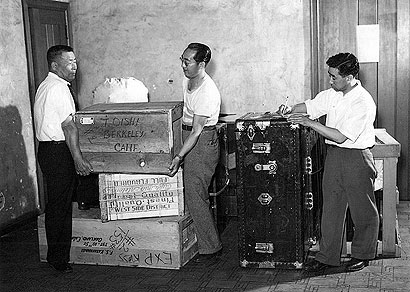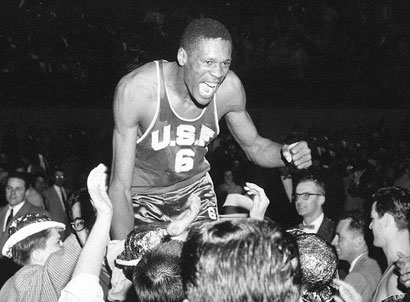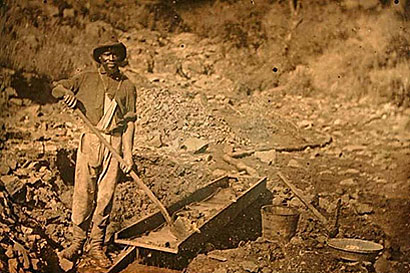Found SF — visit website
Your place to discover & shape San Francisco history
Have a San Francisco memory to share? Add to any of our unfinished articles — you can revise text, or add new images.
Comprised of almost 1,850 pages, and over 5,000 historical photos, the wiki-based archive FoundSF.org is the product of hundreds of contributors, regular people who were compelled by the chance to investigate some piece of this City's past.
Collection Highlights and Recent Additions:

After Internment: Oakland 1945
Toward the end of February 1945, John Yamashita stepped off a train at the Oakland depot, returning home after three years’ absence. Meanwhile Alma Gloeckler had been teaching in the Oakland public schools and had spent the previous summer at Tule Lake Segregation Center. She was at Tule Lake in Christmas 1944, when the closing of camps was announced. As John’s train approached, Alma, a lone stranger, showed up to meet him at the depot... Alma accompanied John to the West Tenth Japanese Methodist Church to begin the work of reopening its doors as a hostel to receive returning Japanese Americans and to distribute the stored belongings—furniture, mattresses, stoves, refrigerators, sewing machines—left behind by some 135 families.
Continue reading on FoundSF.org
Shaping San Francisco's Digital Archive at Foundsf.org
Co-director Chris Carlsson recently gave a presentation at the DeYoung Museum on the precursor movements and events to the 1967 Summer of Love. The video above is an excerpt from his introduction, describing the difference between creating a narrative arc and leaving the user to find their way through our sprawling archive.
Continue reading on FoundSF.org

Jazz of Modern Basketball: Racism and Virtuosity at the Roots of the Champion Golden State Warriors
We are living the glory days of the Golden State Warriors, going to the NBA Finals for the last four years and winning three of them, setting the single season record of 73-9, changing the nature of the game with their long-range marksmanship, unselfish sharing and dynamic flow, and a sustained defensive excellence. This burst of virtuosity on the basketball court has deep roots even it sometimes feels like it emerged suddenly as if from “nowhere.” There is a fascinating decades-long history in which predominantly African American players invented the physicality and creativity that we enjoy so much among stars like Steph Curry and Kevin Durant. Just as vital to the Warriors success is the extraordinary and infectious defensive talents of Draymond Green, skills based on breakthroughs developed by black roommates at the University of San Francisco in the mid-1950s. The “Strength in Numbers” marketing slogan derives from the Warriors’ actual practice of regularly getting all their players into the game, but has come to exemplify a collective, all-hands-on-deck approach that hints at the horizontalist egalitarian politics of Bay Area political movements, too.
Continue exploring on FoundSF.org

Contesting the History of Early American California
The heroic histories of early California have been fed to the state’s schoolchildren, and to the larger culture, since the first wave of American historians began to churn out the self-aggrandizing tales that were meant to exalt the first settlers while painting a simple story of inevitable progress. The real stories are quite a bit more complicated, and in key respects, the reverse of what we’ve been told. California’s jump-started economy in the middle of the 19th century was based not on hardy self-made men, but was based on an industrial model that required large amounts of capital and the abundant natural wealth without which California would have had a very different history. As Andrew Isenberg cogently puts it, “Anglo California’s economic development thus began with industry, later included agriculture, and still later invented wilderness.” (Mining California: An Ecological History, p. 164). The thousands of gold-seekers who rushed to California were themselves imbued with both the white supremacist ideology of Manifest Destiny, and the liberal belief in individualism and personal honor as the foundation of public life. Prior to the Civil War most white men were committed to a republic of individual producers, either small farmers or self-employed artisans and entrepreneurs. The corporation had not yet risen to the powerful position it would assume within a generation, and while plenty of people took jobs working for wages, few thought of it as anything but a transition on the way to self-sufficiency.
Continue reading on FoundSF.org
 Visit FoundSF.org
Visit FoundSF.org